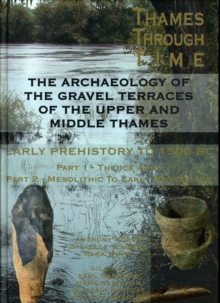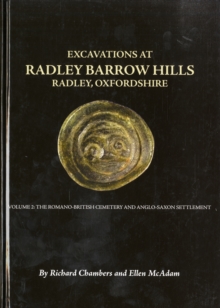
Evolution of a Farming Community in the Upper Thames Valley Hardback
by Alex Smith, Kelly Powell, Alexander Smith, Granville Laws
Part of the Thames Valley Landscapes Monograph series
Hardback
Description
The site at Cotswold Community in the western reaches of the Upper Thames Valley has been a focus for human activity since Neolithic times.
Successive Bronze Age, Iron Age and Roman settlements developed within an increasingly open grassland landscape, which was heavily exploited for the growing crops and the grazing of animals.
The spiritual lives of the inhabitants were glimpsed through a series of structured pit deposits and ritual monuments, including a potential Neolithic timber circle and Bronze Age round barrows. One of the most striking landscape features was a late Bronze Age/early Iron Age pit alignment that extended over 500m, possibly marking one of the earliest attempts at defining territory on a large scale.
It was still a visible feature for some time as it partly dictated the position of the boundaries of a Roman farmstead, which occupied the site from the 1st to 4th centuries AD.
The farm lay in the shadow of Roman Cirencester less than 5km to the north and may even have been involved in the recycling of refuse from this important urban centre.
Following abandonment of the Roman farmstead there was no further occupation on site, although a small number of Saxon agricultural structures indicate continuing use of the land, which may now have been part of a locally-centred Saxon estate.
Information
-
Out of Stock - We are unable to provide an estimated availability date for this product
- Format:Hardback
- Pages:222 pages
- Publisher:Oxford University School of Archaeology
- Publication Date:01/04/2010
- Category:
- ISBN:9781905905164
Information
-
Out of Stock - We are unable to provide an estimated availability date for this product
- Format:Hardback
- Pages:222 pages
- Publisher:Oxford University School of Archaeology
- Publication Date:01/04/2010
- Category:
- ISBN:9781905905164










